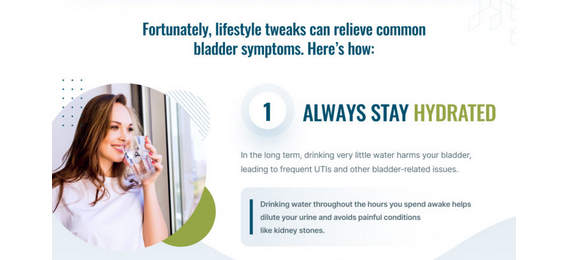Around 25 million adult Americans suffer from Urinary Incontinence,of which 75-80% are women.
Signs You Need a Disc Replacement
With so many other treatment options available, here are some signs to consider artificial disc replacement.
What Are Urinary Tract Infections and How Are They Treated?
Urinary tract infections (UTIs) are extremely common in the US adult population. According to research, UTIs are the most common outpatient infections in the country, primarily affecting women.
While adult women are at higher risk of contracting UTIs, the condition affects men and children as well. Let’s take a closer look at these infections and their treatments.
What Is a UTI?
A UTI afflicts the urinary system, which comprises the urethra, bladder, ureters, and kidneys. It’s usually caused by bacteria, although some UTIs occur due to fungi and viruses. When experiencing a UTI, microbes enter the urinary system through urine. They may irritate the urethra and bladder lining, cause pain and itchiness in the pelvic or rectal area, and affect urination.
A person experiencing a bladder-specific UTI is likely to have a burning sensation while urinating. They may also feel the need to urinate more frequently or notice blood in their urine. In the case of a kidney-specific UTI, they may experience a fever, nausea and vomiting, and lower back pain.
Treating UTIs
Individuals with mild symptoms often resort to home remedies, such as cranberry juice. While cranberries don’t cure a UTI, the proanthocyanidins present in them help prevent bacteria from sticking to the bladder lining. This makes it easier to flush an infection out of the body and reduce its duration. Cranberry juice is considered an effective preventive measure as well.
If your symptoms persist for more than a few days, you need medical treatment via antibiotics (or antivirals and antifungals). Your physician will prescribe an antibiotic course, depending on your condition. Most people need oral antibiotics, especially in the case of lower tract infections. In more severe cases, you may need intravenous antibiotics.
How Are UTIs Diagnosed?
UTIs are usually diagnosed via urinalysis or urine culture. Your physician will prescribe a treatment based on the results. If the treatment doesn’t work or you have recurring UTIs, you may be required to get additional tests done. These include CT scans, ultrasounds, and cystoscopy.

Find a Urologist Near You
If you’re experiencing a UTI, reach out to a urologist in Webster, TX, as soon as possible.
At Houston Physicians’ Hospital, you’ll find a highly qualified team of urologists who can treat various urological conditions and provide urogynecological care. We also offer joint pain treatments, Hip Replacement Surgery Houston, and tremor treatments.
Visit our website to learn more about our specialty hospital and to find a doctor who’s right for you.
Prostate Cancer: Causes and Risk Factors
Prostate cancer is among the most common cancer types. According to statistics, one in eight men is diagnosed with the disease. Experts have predicted more than 268,400 new cases in the US for 2022 alone.
While the cancer is confined to the prostate gland and may require minimal treatment in many cases, other instances can be more severe. The cancer may be aggressive, spread to other body parts, and cause severe symptoms. Here’s what you need to know about the condition:
What Are the Symptoms of Prostate Cancer?
One of the reasons prostate cancer often gets diagnosed late is because patients don’t experience any signs during the initial stages. Once the cancer becomes more advanced, individuals reportedly encounter the following:
- Urination problems
- Blood in semen and urine
- Erectile dysfunction
- Bone pain
- Weight loss
Who’s at Risk of Prostate Cancer?
Medical research hasn’t yet discovered the exact causes of prostate cancer. However, there are several risk factors associated with the disease.
Age
Prostate cancer is more common among older adults, affecting mostly men over the age of 50. While men in their 30s or 40s may also get prostate cancer, the chances of this happening are less likely. Reportedly, most cases of prostate cancer are found in men older than 65.
Race
Prostate cancer has also been found to be more common among men of African American ancestry. It’s also more common among non-Hispanic white individuals than Latino or Asian American individuals. However, the reasons for these racial differences are unclear and more research is required.

Family History
Genetics also play a role in the onset of prostate cancer. People with a family history of prostate cancer are more likely to develop the disease. The risk is comparatively lower in men who don’t have a family history of the disease.
Obesity
Finally, individuals who are overweight or obese are at a greater risk of developing prostate cancer. While a lot more research needs to be done on this to make conclusive claims, studies have shown that individuals with a healthy weight are less likely to get prostate cancer. They’ve also shown that the cancer may be more aggressive among obese individuals.
Find a Urologist Near You
If you’re at a higher risk for prostate cancer or have been experiencing any of the symptoms discussed above, find a urologist in Webster, TX, as soon as possible. The faster you get treated, the more promising your prognosis will be. Also, all men over the age of 50 should get a prostate exam every year as part of their preventive health program.
At Houston Physicians’ Hospital, you’ll find a highly qualified team of urologists who treat prostate cancer and other urological conditions. We also offer joint pain treatments, Hip Replacement Houston, and tremor treatments.
Visit our website to learn more about our specialty hospital and to find a doctor who’s right for you.
Signs You Need to See an ENT Specialist

Serious health issues related to the ears, nose, and throat can be hard to identify on your own. Many people dismiss symptoms, writing them off as harmless. In most cases, they’re right, but sometimes, it’s best to see an ENT specialist to know for sure.
Here are a few reasons you should see an otolaryngologist, aka an ENT specialist, right away:
You’re Experiencing Ringing in Your Ears
Have you been experiencing a ringing sensation, also known as tinnitus, in either or both of your ears lately? While it’s normal to experience a ringing in the ears after loud events such as concerts or after hearing a loud noise, the symptom normally subsides in a few hours, if not days. However, if it persists for a long period of time, you should contact an ENT specialist ASAP. Ringing in the ears is often an early sign of hearing loss. It may also be attributed to an ear injury or infection.
In many cases, the ringing sensation subsides on its own and isn’t a cause for concern. However, if it continues for more than a few days, it can indicate an underlying ear problem. The longer you delay receiving medical assistance, the more likely you are to exacerbate things. Make sure you see an ENT doctor as soon as you can.
You’re Encountering Frequent Nasal Congestion
We all experience nasal congestion from time to time. This is especially common during a change in the weather. However, if you’re continuously finding it difficult to breathe through your nose or constantly waking up with a stuffy nose, something’s not quite right.
An ENT doctor can treat your ongoing nasal congestion. The condition may be a sign of an underlying health issue, such as an infection, a deviated septum, or allergies. An ENT doctor will determine the root cause and treat it, alleviating your nasal congestion.

You Have Recurring Throat Issues
Similarly, recurring throat issues aren’t normal either. It’s one thing to have a sore throat occasionally, especially during the winter; however, if you keep getting flu-like symptoms or your sore throat lingers for more than a couple of days, it’s best to visit an ENT doctor.
Increased hoarseness, difficulty speaking or swallowing, and throat soreness shouldn’t be ignored. If medication and home remedies haven’t soothed your sore throat and the symptoms appear to linger, it’s time to see a doctor to ensure you don’t have a throat condition such as tonsillitis or strep.
Find an ENT Specialist Near You
Looking for an ENT specialist in Webster, TX? Houston Physicians’ Hospital is home to some of the top otolaryngologists in the area. We treat various ENT conditions, such as ear infections, tonsillitis, strep throat, and hearing loss. We also offer joint pain treatment, Hip Replacement Surgery Houston, and tremor treatment.
Visit our website to learn more about our specialty hospital and to find a doctor who’s right for you.
The 3 Types of Tremors You Should Know About
rhythmic oscillations or movements that occur involuntarily in any body part. They’re uncontrollable and unintentional movements that may occur at any given time due to a problem in the region of the brain responsible for muscular movement.
Tremors aren’t necessarily severe or life threatening. They can be treated, and may even disappear on their own. In many cases, though, tremors can indicate a neurological disorder such as Parkinson’s disease or multiple sclerosis.
How Are Tremors Classified?
There are two main types of tremors: resting tremors and action tremors.
Resting tremors occur when your body is at rest and the muscles are relaxed. For instance, they may occur when you’re lying down or when your hands are idle by your side. Action tremors occur when there’s muscular movement, such as when you’re walking or performing a task. They can be further categorized into postural, kinetic, and task-specific tremors.
Common Types of Tremors

Tremors are There are more than 20 types of tremors. The most common ones include the following:
Essential Tremors
Essential tremors are classified as movement disorders. These are postural tremors that typically occur on both sides of the body. However, the symptoms are usually more prominent on the person’s dominant side. Essential tremors usually affect the hands and arms, but they may also impact the lower limbs, vocal cords, and head.
Essential tremor disorder is most prevalent among older individuals. It’s the most common type of trembling disorder, resulting in excessive shaking and uncontrollable movement.
Parkinsonian Tremors
Most people with Parkinson’s disease experience a specific type of resting tremors. These are characterized by a slow, pill-rolling movement in the fingers. In addition to the hands, Parkinsonsonian tremors can also affect the lips, chin, arms, and legs.
Dystonic Tremors
As the name suggests, dystonic tremors affect people with dystonia—a movement disorder that results in involuntary muscle contractions. Individuals with dystonia often experience these tremors, causing them to exhibit repetitive motions, twisting, twitching, or abnormal postures. However, these tremors are irregular and may disappear upon complete rest.
Tremor Treatments in Houston
Houston Physicians’ Hospital provides tremor treatments. We use MR-guided focused ultrasound procedures for essential tremor treatments. We can provide Parkinson’s treatments using the same procedure.
Visit our website to learn more about our specialty hospital in Houston and to find a doctor who’s right for you—whether you need treatment for tremors, upper back treatments, hip surgery, or joint pain treatments.







